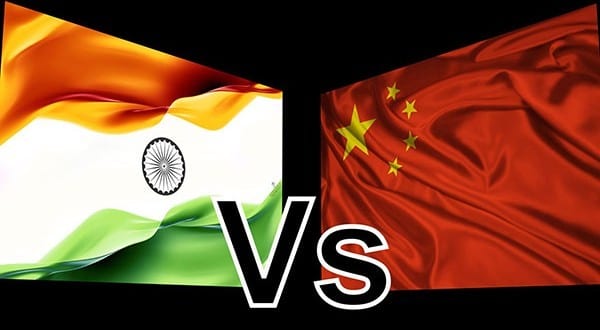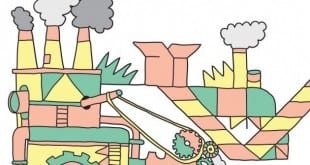Have you ever considered relocating your China manufacturing operations to another country? When buyers talk about sourcing from China, one of the most commonly mentioned challenges is the rising cost of labor. Double-digit increases in China’s minimum wages year-after-year have driven some manufacturers to look for lower-cost alternatives.
To that end, many companies have begun looking to India for manufacturing. Ford Motor Company, Nidec and Yamaha Motor all have established one or more plants in different states in India – and car and auto parts companies aren’t the only ones manufacturing there. Panasonic announced a partnership last year with Delhi-based Minda Industries, and plans to begin manufacturing two million car batteries a year beginning in 2018. Clearly, some companies are seeing a competitive edge by relocating their manufacturing to India.
In this article, we’ll examine the potential advantages – or disadvantages – of manufacturing in India vs. China. By the end, you’ll have a clearer idea of whether or not manufacturing in India is the right move for you and your unique situation.
Cost, Productivity and Availability of Labor in India and China
Since the growing cost of labor in China seems to be among the greatest concerns on the minds of buyers worldwide, why not begin there? But keep in mind, cost of labor should not be the sole consideration when deciding where to produce or source goods.
Manufacturing Wages
It’s no wonder that buyers are particularly sensitive to wages – labor represents one of the chief costs of manufacturing goods. When it comes to manufacturing wages, India has some of the lowest in the world. The average manufacturing labor cost in India in 2014 was just $0.92 per hour, as opposed to $3.52 per hour in China. India’s relatively low cost of labor is one of the strongest incentives for setting up shop there.
Labor Productivity

According to a 2012 article published by McKinsey & Company, “Indian manufacturers lag behind their global peers in production planning, supply chain management, quality, and maintenance—areas that contribute to their lower productivity.” The article also notes that the average worker in India’s manufacturer sector is nearly five times less productive than their counterpart in China.
Comparing the national per capita GDP of each country lends further insight into the productivity of each workforce. Adjusted for purchasing power parity (PPP), per capital GDP tracks each worker’s contribution to the national gross domestic product using a standard unit of measurement. According to the database of the World Bank, China’s per capita GDP in 2014 was $12,609, adjusted for PPP. This figure is more than double India’s equivalent, $5,565. It’s important to note, however, India’s manufacturing sector accounted for about 17 percent of the country’s GDP, while China’s represented about 31 percent of their GDP, as of 2014.
Why the disparity in productivity? One major reason appears to be a high proportion of manufacturing workers employed in India’s unorganized, unregulated sector versus those employed in India’s regulated, organized sector. The Bureau of Labor Statistics reports that the organized sector produces two-thirds of India’s manufacturing output, even though the vast majority – nearly 80 percent – of Indian manufacturing workers are employed in the unorganized sector.
Another potential cause for lower productivity of workers in India is the nature of unions there. Whereas the only legally-recognized labor unions in China are affiliated with the central All-China Federation of Trade Unions (ACFTU), in India, the presence of many different unions in the same factory can make manufacturing a challenge to manage. To address this issue, Narendra Modi, India’s Prime Minister, announced reforms last year that allow for more streamlined reporting of compliance with labor unions. However, unions in India continue to be a deterrent for manufacturing in the country.
When considering the productivity of the workforce in China versus India, China is the clear winner.
Availability of Labor

One other facet of labor availability to keep in mind, however, is worker turnover. China experiences a high seasonal rate of turnover amounting to an estimated 15-30 percent of the migrant labor force around Chinese New Year. High turnover is accompanied by an uptick in quality issues and turnaround time at factories as new, inexperienced workers need to be hired and trained to replace the tens of millions who have left.
Logistics and Infrastructure of India and China
Anyone considering manufacturing in India should first consider the logistics and infrastructure of the country compared to those of alternative sourcing destinations. Logistics and accessible infrastructure can have a major impact on both the deliverability and quality of goods. For example, the time needed to ship goods from an inland factory to a pier for loading on a freighter can vary considerably depending on the development of local means of transportation. Rough conditions or prolonged transit can significantly impact the condition of goods received at their final destination (see5 Ways Factory Location Affects Your Order).
Development of Logistics
The World Bank publishes a Logistical Performance Index (LPI) every two years, ranking countries according to several criteria, including:
- Efficiency of the customs clearing process
- Quality of infrastructure
- Ease of arranging shipments at competitive prices
- Competence and quality of logical services
- Ability to track and trace shipments; and
- Timeliness of shipments & ability to meet delivery deadlines
The LPI ranking of India and China is shown in the table below, along with that of five other popular manufacturing centers in Southeast Asia.
| Country | LPIRank | Customs | Infrastructure | International shipments | Logistics competence | Tracking & tracing | Timeliness |
| Malaysia | 25 | 3.37 | 3.56 | 3.64 | 3.47 | 3.58 | 3.92 |
| China | 28 | 3.21 | 3.67 | 3.50 | 3.46 | 3.5 | 3.87 |
| Thailand | 35 | 3.21 | 3.40 | 3.30 | 3.29 | 3.45 | 3.96 |
| Vietnam | 48 | 2.81 | 3.11 | 3.22 | 3.09 | 3.19 | 3.49 |
| Indonesia | 53 | 2.87 | 2.92 | 2.87 | 3.21 | 3.11 | 3.53 |
| India | 54 | 2.72 | 2.88 | 3.20 | 3.03 | 3.11 | 3.51 |
| Philippines | 57 | 3.00 | 2.60 | 3.33 | 2.93 | 3.00 | 3.07 |
Source: World Bank Logistics Performance Index, 2014
China ranks at number 28 among 160 countries studied, while India is much further down the list at 54. India lags behind China in two areas, in particular – clearing customs and quality of infrastructure.
Strength of Infrastructure
The strength of a country’s infrastructure is a major component of logistics and can have a significant impact on the success or failure of supply chains there. India’s underdevelopment of infrastructure has affected the country’s capacity to manufacture so much so, in fact, that a 2010 report by KPMG found, “estimates indicate that India’s logistics and transportation bottlenecks hinder its GDP growth by one to two percent.” Based on India’s per capita income in 2010, this loss equates to roughly 10 million new jobs every year.
As of 2011, India had almost 4.7 million kilometers of roads, almost 600,000 more kilometers than China. However, only about 54 percent of roads in India were paved, whereas 84 percent of Chinese roads are paved. India falls behind in other areas of infrastructure as well, as illustrated below.
| Logistics Efficiency Indicators | India | Global |
| Road Transportation | ||
| Average truck speed (in kmph) | 30 – 40 | 60 – 80 (including China) |
| Four lane road length (in kms) | 7,000 | 34,000 (China) |
| National highway length in kms) | 66,590 | 1,900,000 |
| Average surface freight (in cents/km) | ~ 7 | 3.7 (Japan) |
| Average distance travelled by a truck per day (in kms) | 200 | 400 |
| Air Transportation | ||
| Airport waiting time – Exports (in hours) | 50 | 12 |
| Airport waiting time – Imports (in hours) | 182 | 24 |
| Aviation turbine fuel as a % of operating cost | 35 – 40% | 20 – 25% |
| Ports & Sea Transportation | ||
| Turnaround time at ports (in hours) | 84 | 7 (Hong Kong & Singapore) |
| Annual container handling capacity | 8.4mn TEUs | 60mm TEUs (China) |
| Containers handled per ship, per hour (maximum) | 15 | 25 – 30 |
| Throughput density (maximum) | 45,000 TEUs / hectare | 170,000 – 220,000 TEUs / hectare |
| Warehousing | ||
| Average inventory days | 33 | 24 (China) |
Source: Cygnus Business Consulting & Research, KPMG analysis
Since Prime Minister Modi assumed office last year, the incumbent party has announced plans to invest $1 trillion in expanding and upgrading existing infrastructure in India in the coming years. But until significant improvements are made, India’s infrastructure concerns will continue to greatly inhibit the country’s manufacturing abilities.
Other Factors for Manufacturing in India

One factor that has aided manufacturing growth in other countries is foreign direct investment (FDI), something the government of India has discouraged. However, Modi’s recent “Make in India” campaign has brought about an increase in FDI of 48 percent since last September. This growth in foreign investment could indicate renewed faith in government reforms and offer promising increases in manufacturing output in the near future.
Conclusion
As we’ve seen, India falls behind China in a number of key areas that influence sourcing decisions. Despite the large and often-heralded labor cost savings from which a buyer could benefit by manufacturing in India, the difference may be paid for by other factors, such as labor productivity and organizational & logistical setbacks.
No two buyers are in the same situation. So it follows, each buyer must account for all factors that will affect their own specific product and circumstances, to determine the best location for manufacturing. Some major companies are already moving production to India, while others are finding that China continues to be the better choice for them. Only you can decide if manufacturing in India is the right move for you.
 Foshan Expats Self Help Forum for Foreigners
Foshan Expats Self Help Forum for Foreigners 




